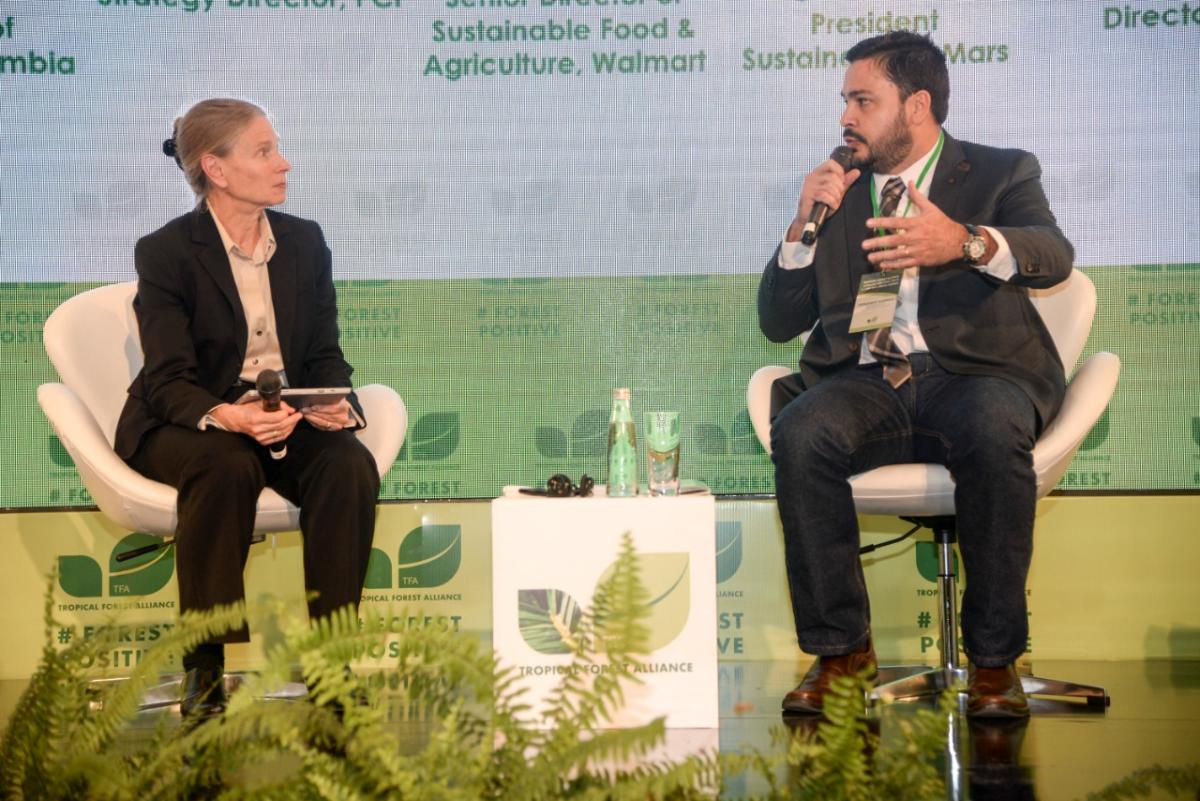Good News and New Tools to Help Companies Fight Against Global Deforestation
By: Katie Anderson
Originally posted on EDF+Business
Every day, we see another article about forests disappearing in the Amazon. This coverage shines light on a significant global problem that is only intensifying. With all the bad news, I was especially energized to attend the Tropical Forest Alliance 2020 (TFA 2020) Annual Meeting last week, where around 200 passionate people gathered to promote a forest positive future.
Attendees included high profile government officials, including remarks from Colombian President Iván Duque Márquez, NGOs like Conservation International and companies such as McDonalds, Walmart and Cargill.
The major story that emerged revolved around collaboration. The days of working in individual siloes – whether that be government action, civil society campaigns or corporate commitments – are over.
Here are some takeaways and potential next steps for companies looking to collaborate and build on what we discussed at the TFA2020 meeting:
The PCI Pitchbook: a gamechanger for corporate engagement on curbing deforestation
During the event, speakers emphasized the need for effective cross-sectoral collaboration in what is called a jurisdictional approach. This approach ensures that private sector commitments, government policy and NGO actions work in concert to drive sustainable development across a region. The goal is to show that thriving forests and strong economic growth can – and must – go hand in hand.
At the TFA meeting, the Produce, Conserve, Include (PCI) initiative launched its PCI Pitchbook, which aims to help companies learn how
they can support specific actions within Mato Grosso that layer into the jurisdictional strategy. The Pitchbook was created to help answer HOW companies can tangibly engage in jurisdictional approaches.
With the Pitchbook, companies can now select from 11 projects underway in Mato Grosso based on commodities – e.g., cattle, soybeans, cocoa and coffee – and activities for engagement such as financial contributions, technical support or sourcing commitments.
These corporate actions layer into PCI’s broader sustainable development strategy, which was launched in 2015 to protect native vegetation while increasing production on currently cleared land. If Mato Grosso meets its ambitious goals, the state could avoid over six gigatons of emissions by 2030.
Explicitly link forest health and climate health in corporate strategies
Frances Seymour, a distinguished senior fellow at WRI, shared concerning facts about global tree cover loss, and the reality is bleak. Forest loss continues to rise, despite our 2020 commitments to zero net deforestation from the production of key commodities.
While deforestation has severe implications for biodiversity, which was highlighted at the TFA meeting, the climate impact of forests tells an equally urgent story. If forest loss were a country, it would be the second largest emitter after China. Trees also remove about one-quarter of the carbon dioxide emitted by human activities, so fewer trees mean more CO₂ remains in the atmosphere.
This means we need to start sprinting towards results and towards a future with more forests. Without trees, we are cutting ourselves off at the knees in the fight against climate change. Therefore, companies with climate goals need to incorporate forest protection into their strategies.
Think about what’s next after your company’s 2020 deforestation goals expire
For companies with goals to reduce deforestation in their supply chains by 2020, how are you progressing? Consider using the PCI Pitchbook as your guide to actions in Mato Grosso that can help you achieve your goals.
We also need to see continued progress post-2020. Successful companies will continue to learn from past work and drive forward with a more comprehensive toolkit after 2020, which should include supporting jurisdictional approaches.
I’m hopeful that I’ll see more positive news in 2019 from companies that have decided to ramp up their commitments to reduce deforestation in their supply chains. As always, EDF+Business is here to help. For companies just getting started with addressing deforestation in their supply chains, check out the “Thriving Forests” section of our Supply Chain Solutions Center.
Follow Katie on Twitter.



